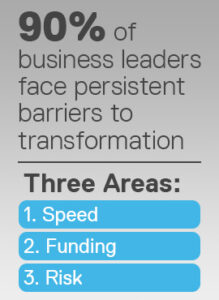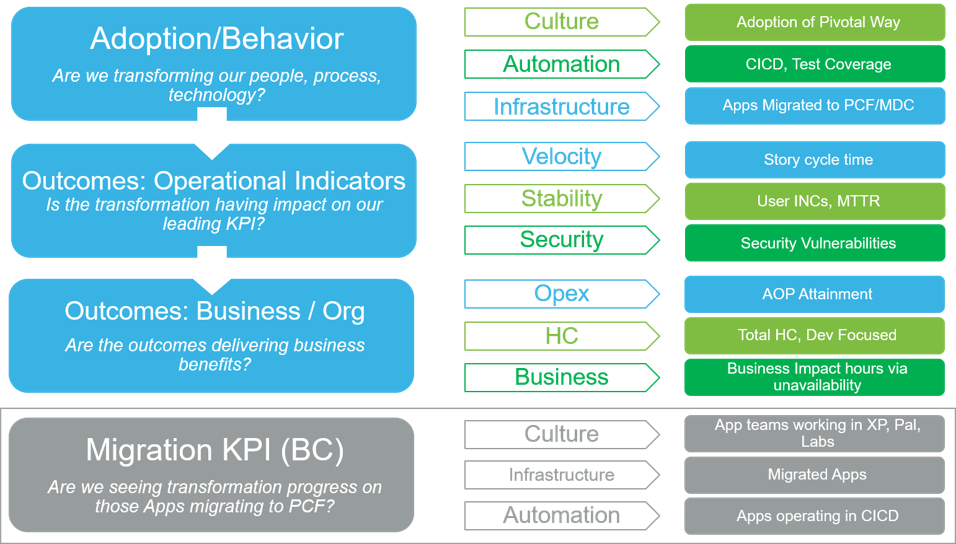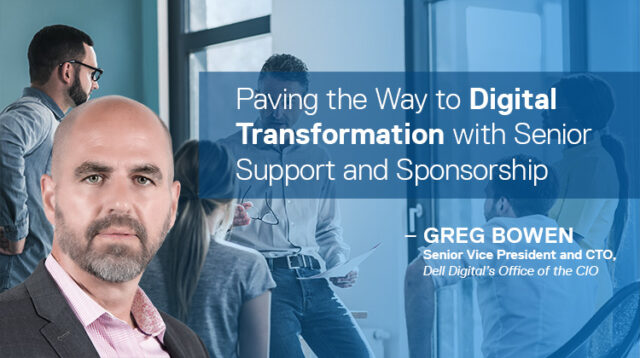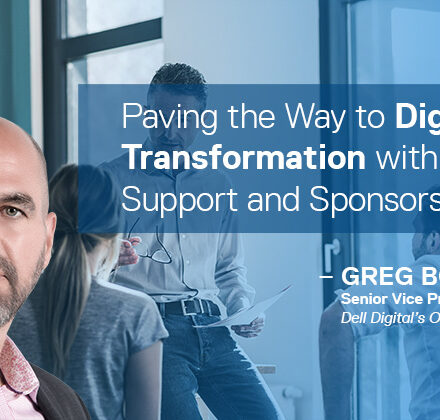 Digital transformation is a strategic business imperative. Every organization needs to be a digital organization, powered by data, running in a multi-cloud world.
Digital transformation is a strategic business imperative. Every organization needs to be a digital organization, powered by data, running in a multi-cloud world.
Organizations that have not begun laying the groundwork for the digital future by modernizing their infrastructure, strengthening their development capacity, connecting delivery teams with their customers, and redefining how they build and deploy software are lagging behind. Yet more than 90 percent of business leaders tell us they face persistent barriers to transformation related to speed, funding and risk. Breaking down those barriers is essential to start — and more importantly, accelerate — the mission-critical transformations required to realize the digital future.
As the world’s largest end-to-end technology provider, Dell Technologies faces many of the same challenges as our customers. In many established companies like ours, where you’ve been operating for decades, digital transformation is an enormously complex challenge. Previously, I shared how Dell began our ongoing transformation initiative and the lessons we’ve learned thus far. Called the Dell Digital Way, we are making a tremendous shift in our organizational culture along with integrating a combination of new processes and technology. In support of our customers who are considering or starting their own digital transformation, I thought I’d address how we have overcome one of the most common barriers: lack of senior support and sponsorship. Both business and IT leaders are jointly responsible for the digital business transformation of the enterprise.
Why You Need Executive Buy-In, and How to Get It
Senior support and sponsorship is a universal requirement for driving digital transformation. Once you have leaders engaged, budget and resources follow. As important as budget and resources are, leader engagement throughout the program is more critical. Transformation can only be successful if your leaders learn new tools and techniques and apply them to how they manage their teams. Consider the findings of the 2018 Dell Technologies Digital Transformation Index. According to the 4,600 senior leaders surveyed, lack of senior support and sponsorship is among the top 10 barriers digital transformation faces at their organizations. If your leaders aren’t engaged, your teams won’t work differently, and your new tools and techniques will stall.
More than a year ago, Dell made a commitment to transform our people, processes and technology to produce better experiences and products for our team members and our customers, and better outcomes for the businesses we support. We, too, had to garner support and sponsorship from our senior executives.
Why?
Because just like our customers — Dell must concurrently run the business and keep the lights on while driving digital transformation — and our senior management needed to understand and buy into what we were doing. More importantly, they needed to understand why we were doing it and how much they must invest – not just dollars but in overall commitment.
You can fund new technology and enablement but if you don’t change how your leaders are working with your teams and how you are measuring success, you are not transforming.
4 Key Takeaways from Working with Our Senior Executives
Start with the benefits of digital transformation for the business. Senior leaders are, of course, keenly concerned about cost — what financial upside will your transformation deliver and what will it cost to achieve your objectives. But the ability of the business to be and remain competitive in an ever-changing global market is paramount. Your executives need to understand why transformation is necessary, the vision, your business objectives. Leaders must recognize how investing will deliver not just cost benefits over the long term but significant speed and competitive benefits to their business as well.
Work with your CFO to communicate the return on investment. While costly, transformation has a strong ROI— which means you need to qualitatively and quantitatively show how your investment will pay off. Leverage data to show how transformation translates into business outcomes. At Dell, we created a business case for digital transformation that illustrates both cost avoidance and business growth, in partnership with our CFO, to help our senior leaders understand the return on the investment we were asking them to make.

To track progress against the business case we identified leading and lagging metrics. Our metrics range from adoption of specific behaviors, such as test-driven development, to technology adoption, such as Pivotal Cloud Foundry. By adopting these behaviors and technology, we expect improvements in key operational performance indicators — time to deliver, uptime, user incidents, defects — that should lead to positive business outcomes like increased delivery speed, cost savings and improved customer experience. By quantifying the increase in our efficiency, we secured senior leader support for resources and budget.
Help the business realize that digital transformation is an imperative: you need to create a modern operating model. In today’s fast-paced digital world, organizations need to respond quickly to changes. IT must evolve from back-office players to a catalyst for delivering competitive advantage and delighting customers. Without a modern operating model, this is very difficult, if not impossible.
Case in Point: The Dell Digital Story

At Dell, we wanted IT team members to move from being order takers to partners working directly and iteratively with business leaders, not other just representatives from IT.
To do this, we are:
- Pairing IT Portfolio Leaders with business owners to make day-to-day technology decisions. Direct relationships with our business partners and customers increase collaboration and enable continuous delivery.
- Eliminating overlay organizations that sit between the business and IT. Instead, we are building a continuous engagement model. This is allowing our technology teams to take a product versus program approach — and because the business is involved in technology decisions and planning, we deliver better software the first time.
- Shifting the way senior leaders think about IT. Take delivery approach, for example. In our old model, IT would receive the request for capabilities for the business and then deliver months maybe years later. In our new continuous delivery model, the business sees the progress made in software releases every day. We are also more responsive to customer feedback. So, we’ve not only shortened delivery times, but we are also delivering more value. That’s the conversation that’s going to resonate at the senior level.
Keep in mind, our challenges are similar to your challenges.


